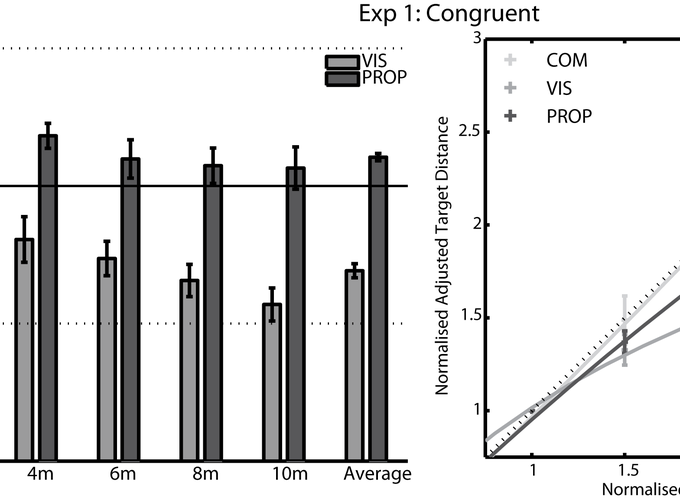Contributions of visual and proprioceptive information to travelled distance estimation during changing sensory congruencies
Abstract
Recent research has provided evidence that visual and body-based cues (vestibular, proprioceptive and efference copy) are integrated using a weighted linear sum during walking and passive transport. However, little is known about the specific weighting of visual information when combined with proprioceptive inputs alone, in the absence of vestibular information about forward selfmotion. Therefore, in this study, participants walked in place on a stationary treadmill while dynamic visual information was updated in real time via a head-mounted display. The task required participants to travel a predefined distance and subsequently match this distance by adjusting an egocentric, in-depth target using a game controller.Travelled distance information was provided either throughvisual cues alone, proprioceptive cues alone or both cues combined. In the combined cue condition, the relationship between the two cues was manipulated by either changing the visual gain across trials (0.7×, 1.0×, 1.4×; Exp. 1) orthe proprioceptive gain across trials (0.7×, 1.0×, 1.4×; Exp. 2). Results demonstrated an overall higher weighting of proprioception over vision. These weights were scaled, however, as a function of which sensory input provided more stable information across trials. Specifically, when visual gain was constantly manipulated, proprioceptive weights were higher than when proprioceptive gain was constantly manipulated. These results therefore reveal interesting characteristics of cue-weighting within the context of unfolding spatio-temporal cue dynamics.
